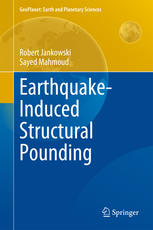

Most ebook files are in PDF format, so you can easily read them using various software such as Foxit Reader or directly on the Google Chrome browser.
Some ebook files are released by publishers in other formats such as .awz, .mobi, .epub, .fb2, etc. You may need to install specific software to read these formats on mobile/PC, such as Calibre.
Please read the tutorial at this link: https://ebookbell.com/faq
We offer FREE conversion to the popular formats you request; however, this may take some time. Therefore, right after payment, please email us, and we will try to provide the service as quickly as possible.
For some exceptional file formats or broken links (if any), please refrain from opening any disputes. Instead, email us first, and we will try to assist within a maximum of 6 hours.
EbookBell Team

4.3
8 reviewsThis books analyzes different approaches to modeling earthquake-induced structural pounding and shows the results of the studies on collisions between buildings and between bridge segments during ground motions. Aspects related to the mitigation of pounding effects as well as the design of structures prone to pounding are also discussed.
Earthquake-induced structural pounding between insufficiently separated buildings, and between bridge segments, has been repeatedly observed during ground motions. The reports after earthquakes indicate that it may result in limited local damage in the case of moderate seismic events, or in considerable destruction or even the collapse of colliding structures during severe ground motions. Pounding in buildings is usually caused by the differences in dynamic properties between structures, which make them vibrate out-of-phase under seismic excitation. In contrast, in the case of longer bridge structures, it is more often the seismic wave propagation effect that induces collisions between superstructure segments during earthquakes.